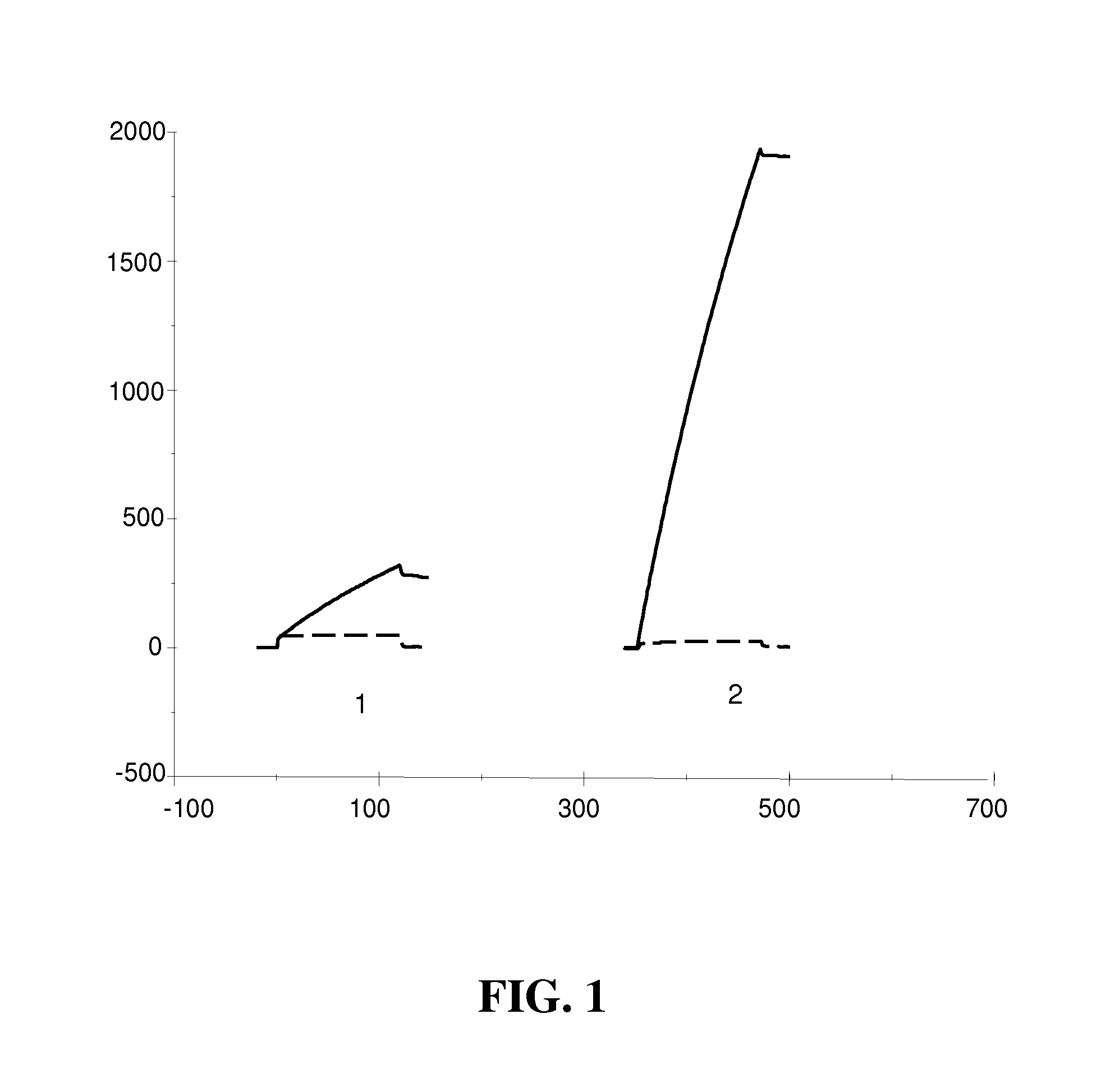Compositions and Methods for Detecting TLR3
a technology of tlr3 and composition, applied in the field of composition and methods for detecting tlr3, can solve the problems of not always finding monoclonal antibodies, which are not always effective, and cancer is a major cause of death in the world, and achieve the effect of stimulating or inhibiting tlr receptors
- Summary
- Abstract
- Description
- Claims
- Application Information
AI Technical Summary
Benefits of technology
Problems solved by technology
Method used
Image
Examples
example 1
Comparison with Commercially Available Antibodies
[0165]Commercially available anti-TLR3 antibodies were tested in an immunocytochemistry (ICC) assay on 293T and 293-TLR3 cells. Briefly, cells were coated on Marienfeld adhesion slides, (#80107926, VWR) and fixed in cold acetone for 20 nm at 4° C. Cells were permeabilized with permwash (#554723, from BD biosciences) and anti-TLR3 antibodies, labeled with biotin, followed by streptavidine coupled to peroxidase from SIGMA. Staining was revealed with AEC. TLR3.7 antibody yielded faint staining on 293T-TLR3 cells overexpressing TLR3, but no staining on other TLR3 expressing tumor cells. The goat pAb anti-TLR3 Ab from R&D systems yielded strong staining on 293T-TLR3, specific since no staining could be obtained on control 293T cells.
[0166]The two antibodies were tested in Biacore for binding to immobilized human TLR3 and TLR4 protein. TLR3.7 antibody showed low binding to TLR3 but not TLR4. Likewise, the goat pAb anti TLR3 from R&D systems...
example 2
Obtaining of TLR3-Specific Monoclonal Antibodies
[0169]Primary screen. To obtain anti-TLR3 antibodies, Balb / c mice were immunized with a recombinant human His-tagged TLR3 extracellular domain recombinant protein (R&D systems, #1487-TR-050). Mice received one primo-immunisation with an emulsion of 50 μg TLR3 protein and Complete Freund Adjuvant, intraperitoneally, a 2nd immunization with an emulsion of 50 μg TLR3 protein and Incomplete Freund Adjuvant, intraperitoneally, and three boosts with 10 μg TLR3 protein, intravenously. Immune spleen cells were fused with X63.Ag8.653 immortalized B cells, and cultured in the presence of irradiated spleen cells. 40 culture plates were obtained and evaluated in a first screen for TLR3 binding using an ELISA developed for detection of binding to TLR3. Briefly, His-tagged recombinant TLR3 protein (R&D systems, #1487-TR-050) was coated on Ni-NTA 96-wells plates (Qiagen). Supernatant (SN) from hybridoma culture plates and incubated in TLR3-plates, an...
example 3
Development of an Amplification System and Staining Protocol for 40F9
[0174]40F9.6 was tested on tonsil tissue with different detection systems, in order to identify the detection system yielding the strongest signal, with the lowest noise:signal ratio. The ENVISION System commercialized by DAKO A / S (Glostrup, Denmark) was selected. ENVISION is an amplification system based on an HRP-labeled polymer conjugated to secondary antibodies. Tissue sections were dewaxed and rehydrated before the antigen unmasking procedure in boiled citrate buffer (pH6). Endogenous peroxydases were blocked by a 3% solution of H2O2. 40F9.6, at 10 μg / ml, was applied on tissue sections, incubated for 1 hour at room temperature, and was revealed by using the ENVISION System and DAB-chromogen (Dako, Glostrup, Denmark).
PUM
 Login to View More
Login to View More Abstract
Description
Claims
Application Information
 Login to View More
Login to View More - R&D
- Intellectual Property
- Life Sciences
- Materials
- Tech Scout
- Unparalleled Data Quality
- Higher Quality Content
- 60% Fewer Hallucinations
Browse by: Latest US Patents, China's latest patents, Technical Efficacy Thesaurus, Application Domain, Technology Topic, Popular Technical Reports.
© 2025 PatSnap. All rights reserved.Legal|Privacy policy|Modern Slavery Act Transparency Statement|Sitemap|About US| Contact US: help@patsnap.com

